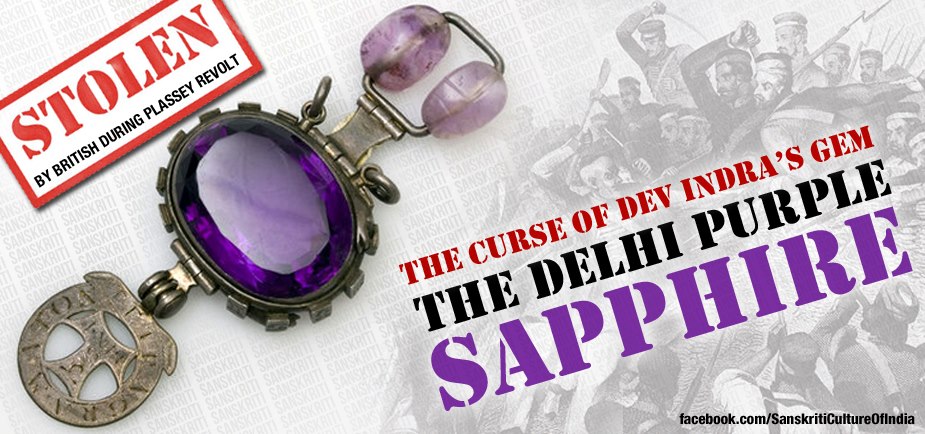At first glance, the Delhi Purple Sapphire is nothing special to look at compared to the Hope diamond and the Koh-i-Noor diamond. In fact, it is not even a sapphire but rather a plain looking oval-cut amethyst set in blackened silver setting, marked with astrological signs and framed by two scarab carved gems on either side. Despite its very unremarkable appearance, the Delhi Sapphire is considered to be the most notoriously cursed gems to date.
Obscure from the world until chanced upon by Peter Tandy, a curator at the Natural History Museum in England. The gemstone was accompanied by a typewritten from its last owner, Edward Heron-Allen which read, “This stone is trebly accursed and is stained with the blood, and the dishonor of everyone who has ever owned it ,” and, “Whoever shall then open it, shall first read out this warning, and then do as he pleases with the jewel. My advice to him or her is to cast it into the sea.”
This warning was not enough for Heron-Allen. He had taken extra precaution of wrapping the gem in protective charms and sealing it in seven boxes before donating it the museum. The note further gave account of the gemstone’s dark history that he knew, starting from Cawnpore after the Indian mutiny at the Temple of Indra in 1857. A Bengal cavalryman by the name of Col. W. Ferris took the amethyst from temple as his own personal loot, shortly after which both him and his son were beset by health and financial ruin. The sapphire was given to a family friend who committed suicide soon after.
Edward Heron-Allen was an English polymath, writer, lawyer, scientist and Persian scholar who translated the works of Omar Khayyam. A close friend of Oscar Wilde, he became the next owner of the gem in 1890. A man of science, Heron-Allen was not someone who believed in superstition easily but too many incidences led him to believe that the stone was cursed. He tried twice to give it away to friends, both times receiving it back after they met with ill luck.
Heron-Allen even threw the sapphire into Regent’s Canal and again he found it in his possession 3 months later after being found by a dredger. The jeweller who bought the stone recognized it and promptly returned to Heron-Allen whose belief in the curse intensified. He had the stone locked away only to be taken out after his death in 1904 when the amethyst was given to the museum under the request the box not be opened until 3 years after his death.
In 2004, the gem came into the possession of John Whittaker, a member of the Natural History Museum. He was tasked with transporting the sapphire to the Heron-Allen society for an event. During the trip, both he and his wife were trapped in their car amidst the most horrific thunderstorm of their lives.
Tasked with transporting the gem on another occasion, Mr. Whittaker fell violently ill with a stomach bug. Before the stone could be transported for the third time, he found himself in severe pain that ended up with him passing a kidney stone.
Whether the stone is cursed or not, it is ironic to note that the Delhi Purple Sapphire belonged to the temple of the Hindu god of war and weather. The story may seemed to be plucked out of an old black and white horror movie, but it is strongly believed that through its theft from the ancient idol a curse was cast











